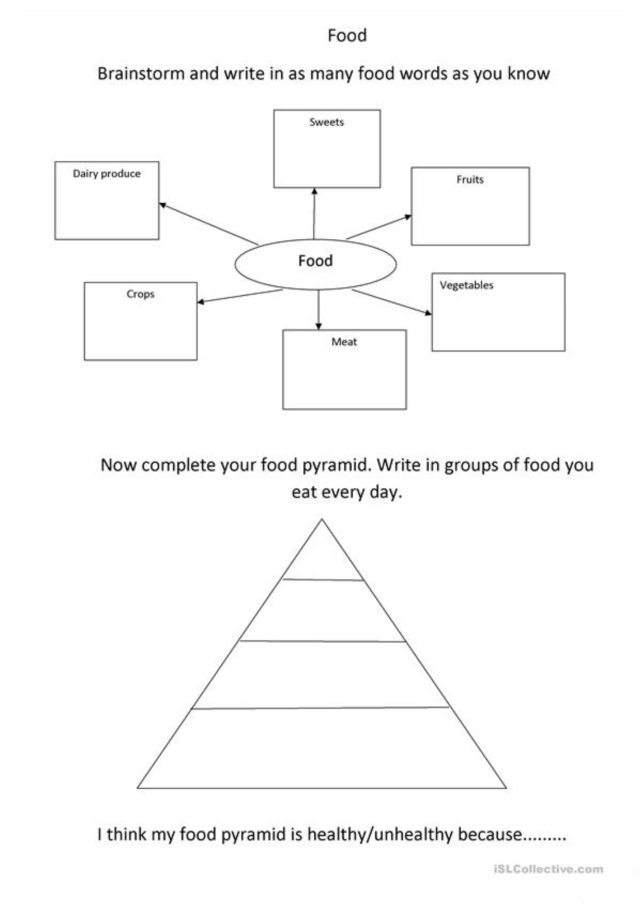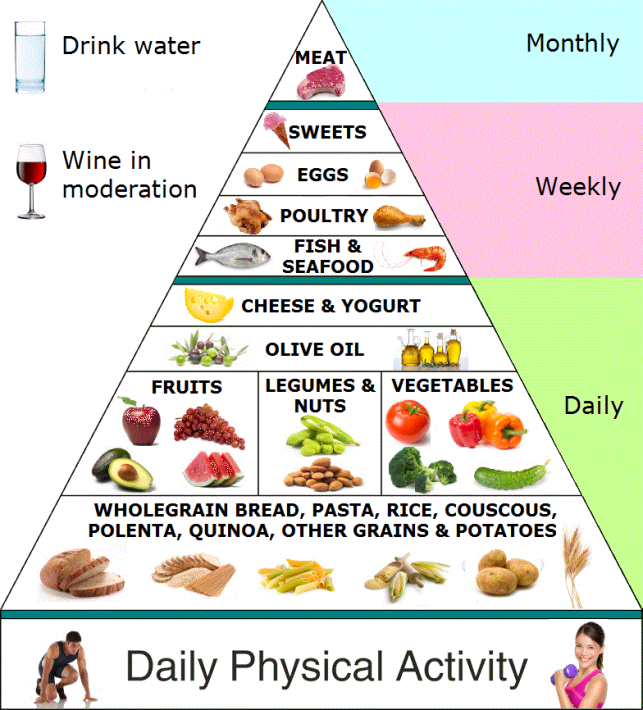Урок " Your Health Depends on Your Food"
Level B1.
Topic: " Your Health Depends on Your Food "
Objectives:
- to improve students' listening, speaking, writing and reading skills;
- to practice students in expressing and exchanging opinions on the topic;
- to develop students' creative thinking, their attention, imagination and memory;
- to train students cooperation in group work;
- to provide students with the opportunity of free-speaking using personal experience and knowledge!
Learning outcomes:
At the end of the lesson learners will be able to:
- to activate and sum up their background knowledge on the topic;
- to motivate students in expressing their own opinions and views on the topic;
- to broaden students’ outlook;
- to improve their listening, reading, writing and communicative skills;
- to analyze and compare the situation.
Equipment:a blackboard, a disc, pictures, cards, video materials, handouts.
PROCEDURE
- INTRODUCTION
The moto of the lesson:
" One should eat to live, not live to eat. "
1`.Greeting
T.:Good morning, students. Our lesson will be devoted to food. We will talk about healthy food, do a lot of activities and have fun. But I'd like to know if you have a healthy lifestyle. Let's start working. As for me, I like doing different activity and I try to eat healthy food. What about you?
Ss’ answers.
2. Warming up.
T.: Look at the blackboard. Read and match the beginning and the ending of the proverbs about health. Do you agree with them? Say how you understand them.
- Health is above a) until it is lost
- Health is never valued b) than cure
- Prevention is better c) wealth
4. It is better to be d) safe than sorry
(Key: 1-c, 2-a, 3-b, 4-d.)
T: I wonder if you have breakfast in the morning. Is it important to have breakfast?
What did you have for breakfast today? And what do you prefer to have? Who makes it for you?
Ss” answers.
II. MAIN PART
1. VOCABULARY PRACTICE
Brainstorming
T: What do you associate the word 'food' with? I want you to create a mind map.
(Students come up to the blackboard, write down their associations and comment on them.)
T: Now, students, let’s watch the video and complete your mindmap.
(https//www.youtube.com.431Energy in Food Presentation Video.)
Students are watching the video and add some ideas.
2. Discussing:
1) What do you know about healthy and unhealthy food?
2) Give some examples of healthy and unhealthy food.
3) Why is it important to eat healthy food?
3. Writing.
T.: Look at the list of products in our presentation and write them down into two columns –“ Healthy Food” and “Unhealthy Food”. Explain why you think so.
(Chocolate, eggs, sweets, nuts, cakes, fruit, chips, ice-cream, vegetables, milk, hamburger, fish, porridge, cola).
4.”Microphone”. Speaking.
S.1: Chocolate, sweets, ice-cream are unhealthy food because it contains a lots of sugar .And much sugar is bad for our health.
S.2: Eggs, nuts, milk are healthy food because they have proteins and vitamins and give us a lot of energy.
S.3: Fruit and vegetables are healthy food because they contain a lot of vitamins. They are good for our health.
S.4: Chips and hamburger are unhealthy food because they are fast food and high-fat products.
S.5: Porridge is a healthy food because it contains vitamin B1.
S.6: Fish is healthy food because it contains fat that is useful for us.
S.7: Cola is unhealthy food because it has a lot of sugar and spoils our teeth.
5. LISTENING
While listening
T.: Listen to what Tim and Katya will order at the restaurant and think who will order healthy food.
SCRIPT
Waiter: Good afternoon, sir.
Tim: I would like a table for two.
Waiter: All right. Follow me, please.
Tim: Can we have the menu, please?
Waiter: Here you are, sir.
Tim: What would you like to eat, Katya?
Katya: I would like a vegetable soup and some grilled fish.
Waiter: And you, sir? Are you ready to order?
Tim: Yes, two noodle soups and one fried fish with potato and one roast beef. And two strawberry ice creams for desert.
Waiter: Would you like some bread?
Tim: Yes, please.
T: Who ordered healthy food?
S 1 : I think it's Katya.
T: And what about Tim?
S2: He ordered harmful food because...
(Gap filling can be one more listening task.)
6.READING
6.1. Pre-Reading Exercises:
Exercise 1. Brainstorming.
T.: Think a little and complete these diagrams in groups.

Exercise 2. Make an analysis:
T.: Look at the diagram, describe it.
What does the term ‘The Healthy Eating Pyramid’ mean?

6.2. While-Reading Exercises:
Exercise 1.
T.: Match the headings to the paragraphs:
1) Add more fruit and vegetables to your diet
2) Setting yourself up for success
3) The fundamentals of healthy eating
4) What is a healthy diet?
(Key: A-4; B-3; C-2; D-1).
A) Eating a healthy diet is not about strict limitations, staying unrealistically thin,
or depriving yourself of the foods you love. Rather, it’s about feeling great, having
more energy, improving your health, and boosting your mood. Healthy eating doesn’t have to be overly complicated. If you feel overwhelmed by all the conflicting nutrition and diet advice out there, you’re not alone. It seems that for every expert who tells you a certain food is good for you, you’ll find another saying exactly the opposite. The truth is that while some specific foods or nutrients have been shown to have a beneficial effect on mood, it’s your overall dietary pattern that is most important. The cornerstone of a healthy diet should be to replace processed food with real food whenever possible. Eating food that is as close as possible to the way nature made it can make a huge difference to the way you think, look, and feel.
B) We all need a balance of 1 _______________, fiber, vitamins, and minerals in
our diets to sustain a healthy body. You don’t need to eliminate certain categories
of food from your diet, but rather select the healthiest options from each category.
Protein gives you the energy to get up and go—and keep going—while also supporting mood and cognitive function. Too much protein can be harmful to people with kidney disease, but the latest research suggests that many of us need more 2_____________, especially as we age. That doesn’t mean you have to eat more animal products—a variety of plant-based sources of protein each day can ensure your body gets all the essential protein it needs. Fat. Not all fat is the same. While bad fats can wreck your diet and increase your risk of certain diseases, good fats 3_________________. In fact, healthy fats—such as omega-3s—are vital to your physical and emotional health. Including more healthy fat in your diet can help improve your mood, boost your well-being, andeven trim your waistline.Fiber. Eating foods high in dietary fiber (grains, fruit, vegetables, nuts, and beans) can help you stay regular and lower your risk for heart disease, stroke, and diabetes.It can also improve your skin and even help you to lose weight.Calcium. As well as leading to osteoporosis, not getting enough calcium in your diet can also contribute to anxiety, depression, and sleep difficulties. Whatevery our age or gender, it’s vital to include calcium-rich foods in your diet, limit those that deplete calcium, and get enough 4______________to help calcium do its job.Carbohydrates are one of your body’s main sources of energy. But most should come from complex, unrefined carbs (vegetables, whole grains, fruit) rather than sugars and refined carbs. Cutting back on 5___________, starches, and sugar can prevent rapid spikes in blood sugar, fluctuations in mood and energy, and a buildup of fat, especially around your waistline.
C) To set yourself up for success, try to keep things simple. Eating a healthier diet
doesn’t have to be complicated. Instead of being overly concerned with counting
calories, for example, think of your diet in terms of color, variety, and freshness.
Focus on avoiding 6_______________and opting for more fresh ingredients whenever possible.
D) Fruit and vegetables are low in calories and nutrient dense, which means they
are packed with 7 _______________. Focus on eating the recommended daily amount of at least five servings of fruit and vegetables and it will naturally fill you
up and help you cut back on unhealthy foods. A serving is half a cup of raw fruit or
veg or a small apple or banana, for example. Most of us need to double the amount
we currently eat.
6.3. Post-Reading Exercises:
Exercise 2.
T.: Complete the gaps with the correct phrase:
(protein, fat, carbohydrates; high-quality protein; protect your brain and heart;
magnesium and vitamins D and K; white bread, pastries; packaged and
processed foods; antioxidants).
1- antioxidants; 2- high-quality protein; 3- protect your brain and heart; 4- magnesium and vitamins D and K; 5- white bread, pastries; 6 -protein, fat, carbohydrates; 7- packaged and processed foods.
Exercise 3.
T.: Read the statements and define whether they are ‘True’ or ‘False’.
Prove your answer.
1) A healthy diet requires strict limitations.(F)
2) You don’t need to eliminate certain categories of food from your diet.(T)
3) Eating foods high in dietary fiber increases the risks for heart disease, stroke,
and diabetes.(T)
4) Too much calcium in your diet can also contribute to anxiety, depression, and
sleep difficulties.(F)
5) Carbohydrates are one of your body’s main sources of energy.(T)
6) Fruit and vegetables are low in calories and nutrient dense.(T)
Exercise 4. Speaking.
T.: Answer the questions:
1) Does our mood depend on our eating habits?
2) Should you eliminate certain categories of food from your diet?
3) What element can be harmful to people with kidney disease?
4) Name healthy fats.
5) Why is it essential to eat foods high in dietary fiber?
6) How much fruit and vegetables should be included in daily meal?
Exercise 5: Match highlighted expressions to the synonyms:
1) pleasant result - ……………..
2) key element - ……………….
3) thinks - ……………………..
4) great choice - ………………
5) important - ………………..
6) exhaust - …………………..
7) mood swings - …………….
8) concentrate on - …………….
(Key: 1- to set up for success; 2 – cornerstone; 3- saying; 4- a variety; 5- vital; 6- deplete; 7- fluctuations in mood; 8- focus) .
Exercise 6. Writing .Make up the eight sentences using expressions from exercise 5.
7.Group Work:
Preparing meals. Students are divided into groups and each group gets its recipe.
T: Students, read the recipes, please. But remember! Don’t read the name of your dish! Your opponent team has to guess the name of it while listening to your recipe-poem and cook it. Try to read these poems clearly
I Group
Salad
Take some eggs, potatoes, carrots
(They’re boiled already).
Peel and cut them into pieces
Put cucumbers maybe.
Add some salt and sour cream,
Don’t forget of onion, peas.
Bacon add some grams and mix.
Help yourself, my dear, please!
Opponent team: Is it a healthy food?
Answer: Yes, it is.
Opponent team: Is it a salad?
Answer: Yes, it is.
I I Group
Sandwich
Take and cut some bread, my dear.
Put some butter on it.
Slice the cheese, if volunteer,
Or a sausage maybe.
Spread the cloth and put the plates,
Table napkins for each guest.
Give some coffee to these courses
Can I have a taste?
Opponent team: Is it an unhealthy food?
Answer: Yes, it is.
Opponent team: Is it a hamburger?
Answer: No, it isn’t.
Opponent team: Is it a sandwich?
Answer: Yes, it is.
T.: Choose the food you need and prepare the meal according to the recipe. Good luck to you!
8.Brainstorming.
(While students are preparing meals, they communicate in English).
9.Feedback.
T.: Our lesson is coming to the end. Did you like our lesson? Thank you for the work. Taste your meals. I wish you to be healthy!
10. Students’ assessment.
III. Home Assignment:
T.: Your hometask is : to watch a film “Fast Food Nation” and make a presentation ‘Junk Food’/ ‘Unhealthy Food’.
IV. SUMMARISING
T.: I hope you’ve found our lesson interesting and got some useful information from it. The lesson is over. Good bye!


про публікацію авторської розробки
Додати розробку
